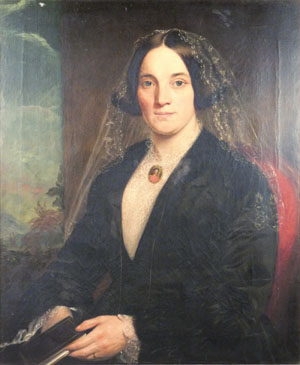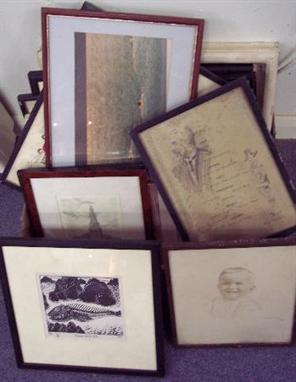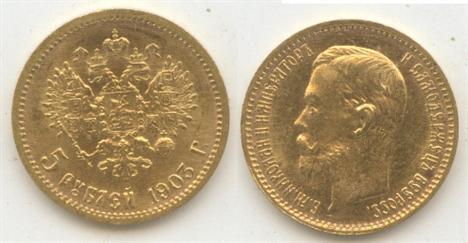283287 Preisdatenbank Los(e) gefunden, die Ihrer Suche entsprechen
283287 Lose gefunden, die zu Ihrer Suche passen. Abonnieren Sie die Preisdatenbank, um sofortigen Zugriff auf alle Dienstleistungen der Preisdatenbank zu haben.
Preisdatenbank abonnieren- Liste
- Galerie
-
283287 Los(e)/Seite
A Queen Anne silver mounted tortoiseshell tobacco box, of oval form, the pull-off cover inset with a die-struck oval portrait of Queen Anne in the centre dated 1705 and signed "OB", by John Obrisset, surrounded with inscription SUBLATAM EX: OCULIS: QUAERIMUS: INVIDI : OBBIT : 1 : AUG : 1714, 8.5cm long, 6.5cm wide
A Queen Anne silver snuffbox, unmarked, of oval form, with a reeded border, the cover impressed with a portrait of Queen Anne flanked with initials `QA`, 7cm long, silver gilt interior, a George III tortoiseshell and old sheffield plate snuffbox, the cover with pressed tortoiseshell with a half length portrait possibly of the Duke of Cumberland, within a foliate scroll border, 6cm diameter, and a 20th century silver pill box, Birmingham 1932, of circular form with beaded borders, the revolving cover to reveal six compartments, 5cm diameter (3)
Jean Pierre Henri Elouis (French, 1755-1840/3) PORTRAIT OF A GENTLEMAN, WEARING , A GREEN COAT, PATTERNED CREAM WAISTCOAT WITH GOLD PIPING AND WHITE CRAVAT, HIS HAIR POWDERED Watercolour on ivory, gold frame, the obverse with blue glass and white enamel border set with diamonds, the reverse with blue glass border (damaged), the central aperture with diamond initial `B`, laid on blue glass panel with plaited hair border, the reverse of the miniature faintly inscribed in pencil, `H Elouis/-/ - Street/ Philadelphia` Oval, 21/2in (64mm) high. Elouis was born in Caen, but by 1784 was enrolled in the R.A. Schools. In 1786, he won a silver medal and continued to exhibit at the R.A. until he went to America in 1787. He worked in Annapolis, Baltimore and Philadelphia (where this miniature was painted, and where he also painted miniatures of George and Martha Washington). In 1807 he returned to France, where he continued to work, eventually becoming curator of the Caen Museum in 1814.
German School, circa 1790 , PORTRAIT OF FREDERICK WILLIAM II (1744-1797), KING OF PRUSSIA (1786-1797), WEARING THE UNIFORM OF THE 18TH ROYAL PRUSSIAN INFANTRY REGIMENT, HIS BLUE COAT WITH SILVER-EMBROIDERED PINK FACINGS, HIS HAIR POWDERED, WEARING THE ORANGE SASH AND BREAST STAR OF THE ROYAL PRUSSIAN ORDER OF THE BLACK EAGLE , Watercolour on ivory, in a brown leather hinged case, the cover gilt-stamped with monogram `R` surmounted by the Royal Prussian crown Oval, 2in (51mm) high. Frederick William II married his first cousin, Elizabeth Christine Ulrika of Brunswick-WolfenbŸttel in 1765 and had a daughter, the later Duchess of York and Albany. After his divorce in 1769, he was remarried to Frederika Louise of Hesse-Darmstadt and had five children, including King Frederick William III. His reign was characterised by scandalous moral decay at court due to his numerous mistresses, including the notorious trumpeter`s daughter `Rieke` Enke, styled `Countess von Lichtenau`. She and two further bigamous morganatic wives, the newly-styled `Countess von Ingenheim` (in 1787) and the newly-created `Countess of Brandenburg` (in 1790) made him the father of a further nine recognised children. His private pre-occupations prevented him from maintaining his uncle`s high standard in the Prussian Army, which finally led to the defeat of Prussia by Napoleon`s troops in 1807. Similar miniatures of the King, in almost identical frames, have been attributed to Anton Friedrich Koenig (1722-1787).
Attributed to Jakob Fransz. van der Merck (Dutch, 1610-1664) PORTRAIT OF THE SCHOLAR DANIEL HEINSIUS (1580-1655) HALF LENGTH, IN A BLACK COAT AND HOLDING A LETTER IN A GLOVED HAND , Oil on canvas , 68 x 54cm. Daniel Heinsius, one of the most celebrated scholars of the late Renaissance in Holland, was born in Ghent. In 1596 he was sent to the University of Franeker to study law under Henricus Schotanus, but moved to Leiden in 1598, where he was to stay for the remaining almost sixty years of his life. In 1602 he was already lecturing at the the University of Leiden and the following year was appointed Professor of Poetics. In 1605 he became Professor of Greek and in 1607 he succeeded Merula as Librarian of the University Library. As a classical scholar he edited many Greek and Latin authors, including Aristotle, Theocritus, Seneca and Terentius. His `De Tragica Constitutione`, published in 1611, was based on Aristotle`s writings on tragedy. Acclaimed as a Latin poet, he wrote Dutch poetry based on classical models and also turned his attention to theology, working on the text of the Greek New Testament for Elzeviers edition (1624,1633) He married Ermgard Rutgers in 1617, by whom he had two children. Embittered in later life as a result of scholastic conflicts, he died in 1655 and is buried at Leiden.
Andrew McIlwraith (fl.1715-1753) PORTRAIT OF JAMES KER OF BUGHTRIG (1700-1768), HALF LENGTH, in a blue coat, white stock and fur-trimmed cloak, Signed `And:McIlwraith Pinxt` and dated 1754 verso, also inscribed `Ja:Ker Esq Conveener/ Member of Parliament for Edinburgh / 1754`, oil on canvas, painted oval , 77 x 63.5cm. The portrait is most probably a contemporary copy of a picture by Allan Ramsey in the National Gallery of Scotland.James Ker was without doubt one of the most talented and important goldsmiths in 18th Century Edinburgh, and dominated the craft both technically and politically throughout the middle years of the century. He was the only craftsman in the 18th Century to represent Edinburgh at Westminster - remarkable for a task reserved for members of the city`s merchant elite. Ker, was son of Thomas Ker, the Edinburgh goldsmith, born to him and his wife Margaret on 14th September 1700. The family was related to the aristocratic house of Ker, Marquesses of Lothian, and shows another example of younger sons of gentry going into the socially acceptable trade of the goldsmith. James was apprenticed to his father at the age of 8 on 12th July 1709, the same year his father was elected deacon of the Incorporation. He undoubtedly prospered, as many items survive of his craft. In 1736, he bought the estate of Bughtrigg near Jedburgh in the borders for £1500. He married, firstly, Jane Thompson in 1725, who died in 1746, and subsequently Elizabeth, daughter of Lord Charles Kerr of Cramond, brother of the 2nd Marquis of Lothian. See previous lot. He was prominent in the affairs of the Incorporation and the city, serving as deacon and town councillor on numerous occasions. Politically he was a Whig. In the chaos of the 1745 Jacobite Rebellion, the members of the Town Council, who elected the city`s single Westminster member of parliament, chose Ker as their MP. His hold on office could not last and, at the elections of 1754, the Edinburgh merchants closed ranks and he was defeated. During his tenure as MP, he entered into partnership with his erstwhile apprentice, William Dempster. They were responsible for the four surviving gold King`s Prizes for Leith Races. He retired from business in 1763, having customers such as the Duke of Gordon, the Earl of Breadalbane, Lady Grisell Baille, the Marquis of Lothian and, of course, several generations of the Hopetoun family. He died on 24th January 1768 in his house at Drumsheugh, just outside Edinburgh.
David Martin (1737-1798) PORTRAIT OF THE HON ELIZABETH KERR (1714-1799), HALF LENGTH SEATED, in a blue dress, white lace bonnet and black lace shawl, her right hand resting on books on a table and holding a pair of spectacles , Oil on canvas , 77 x 64.5cm. In 1750 Elizabeth married James Ker, his second wife. Elizabeth was daughter of Lord Charles Kerr of Cramond, brother of the 2nd Marquis of Lothian.
David Martin (1737-1798) PORTRAIT OF CAPTAIN CHARLES KERR OF CALDERBANK (1753-1813), THREE-QUARTER LENGTH STANDING, leaning on his rifle, wearing the uniform of The Royal Edinburgh Volunteers, with an estuary and castle in the background , Oil on canvas , 129 x 102cm. Provenance: by descent in the Kerr family. Exhibited: on loan to the National War Museum (formerly Scottish Naval and Military Museum), Edinburgh Castle, 1936-1994. Charles spent some time in Holland and London with a view to a commercial life, but resolved instead to be a soldier. He joined the 43rd Regiment as a subaltern, sailed for Boston, fought through the American War of Independence and was wounded at Bunker Hill; on his return to England he became a captain by purchase. Retiring from the army, he became a captain of grenadiers in the first regiment of Royal Edinburgh Volunteers, joint King`s printer for Scotland, along with a cousin, Alexander Kincaid. He is buried in the Greyfriars Churchyard in Edinburgh, near to his wife Marion Sharp and many of his family. Captain Charles Kerr was one of the original officers in the Royal Edinburgh Volunteers. The Volunteers were embodied on 3rd July 1794, when a general meeting of the members was held in the Sheriff Court Rooms when certain leading articles of regulation were established, and a committee of management appointed. The Volunteers were to bear all their own expenses of clothing and other necessaries; and half-a-guinea of entry money was exacted from each member towards defraying contingencies. Subsequently, however, on application to Government, the usual pay was obtained for an adjutant; pay and clothing for a sergeant-major and twenty sergeants; and also for twelve drummers and twelve pipers. The entire scheme of embodying the citizens as volunteers, it is said, was solely projected by the late James Laing, Deputy City Clerk. The uniform was described to consist of a blue coat, with a red cape and cuff, white lining turned up in the skirts, two gold epaulettes, and a button bearing the name of the corps and arms of the city; white cashmere vest and breeches, and white cotton stockings; short gaiters of black cloth; a round hat, with two black feathers and one white. The belts of the Edinburgh Volunteers were painted white, which soon gave the corps an awkward appearance on account of the paint scaling off, and leaving portions of white and black alternatively. They were accordingly soon laid aside, and the common buff belt substituted. The regiment, being assembled in Heriot`s Green on the 26th September 1794, was presented with a stand of colours by the Lord Provost (Sir James Stirling), attended by the two senior Magistrates, the Principal of the University, and the whole Members of the Town Council, in their robes. The colours were very handsome: the one elegantly embroidered with a crown, and the letters G. R.; and the other with the City Arms. A vast crowd of spectators attended to witness the presentation. The 43rd (Monmouthshire) Regiment of Foot was an infantry Regiment of the British Army. It was raised as Thomas Fowke`s Regiment of Foot in 1741, renamed the 54th Regiment of Foot in 1747, and became the 43rd Foot in 1751. The Regiment saw action in the Americas during the 1770s and 1780s. Charles Kerr is listed as a bookseller and printer in the Edinburgh Directory and became His Majesty`s Printer for Scotland. The island in the background could be Inchgarvie Island in the Firth of Forth. Martin was a pupil of Allan Ramsay from 1752; in 1755 he joined Ramsay in Rome, where he remained for over a year, studying under the patronage of Robert Alexander, an Edinburgh banker. On Ramsay`s return to Britain, Martin worked for him in London until 1775, painting most of the drapery work for him during the early and middle 1760s. By 1766, when he engraved Ramsay`s portrait of Jean Jacques Rousseau, he was earning over £300 a year as assistant and copyist. He began his independent practice while still engaged in Ramsay`s studio and his finest early portrait is that of Benjamin Franklin in 1767; it is informal and intimate, and it was described by Horace Walpole as `a great likeness`. Although Martin`s preferred format was three-quarter length, in the late 1770s he attempted full-lengths of Henry, 2nd Earl Bathurst and William, 1st Earl of Mansfield. We wish to thank Stuart Allan, Senior Curator of Military History, National War Museum, Edinburgh. Confirmation that this was on loan to the NWM.
Dan Leno (George Wild Galvin, 1860-1904), a successful music hall comedian, momentos of his career, consisting of a pen and ink sketch portraying Leno as The Salvage Man, painted by Arthur Moreland, dated 1901, another watercolour caricature painted by W. Morgan, dated 1893, two framed photographs, painted papier mache portrait bust, 16in. and Leno`s biography, J. Hickory Wood, pub. Methven & Co., containing two ink sketches
A rare set of early 19th century Napoleonic printed tokens, commemorating British victories in Portugal, Spain and France, 1808-1815, twelve circular printed tokens (one to each side), each commemorating famous battles, two further tokens applied to circular brass box, box cast with portrait bust of the Duke of Wellington and script, box 1.75in. diameter SEE ILLUSTRATION
Samuel Shelley/Mrs George, Tavistock, Devon/bust portrait of the sitter, looking right wearing a white dress and coral bead necklace/signed and inscribed on the reverse/ 7.5cm x 5.5cm (3" x 2.25")/in an oval brass frame/Provenance: lot 68, 8th December 1994, formerly in the Bastard Collection
-
283287 Los(e)/Seite

























































